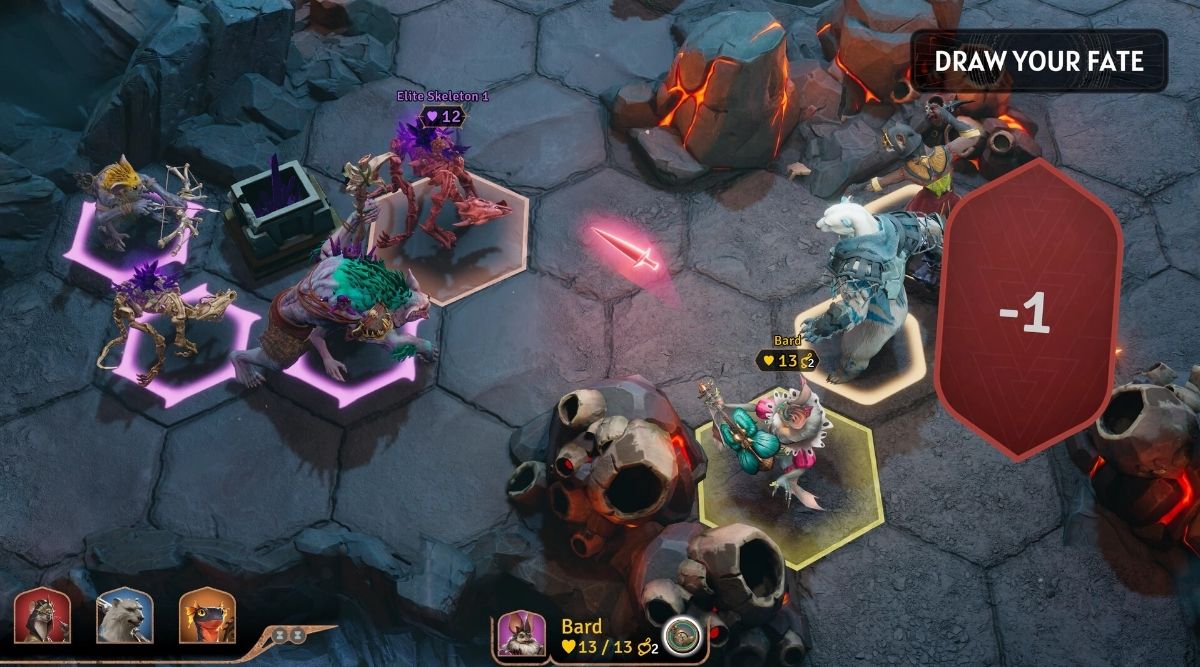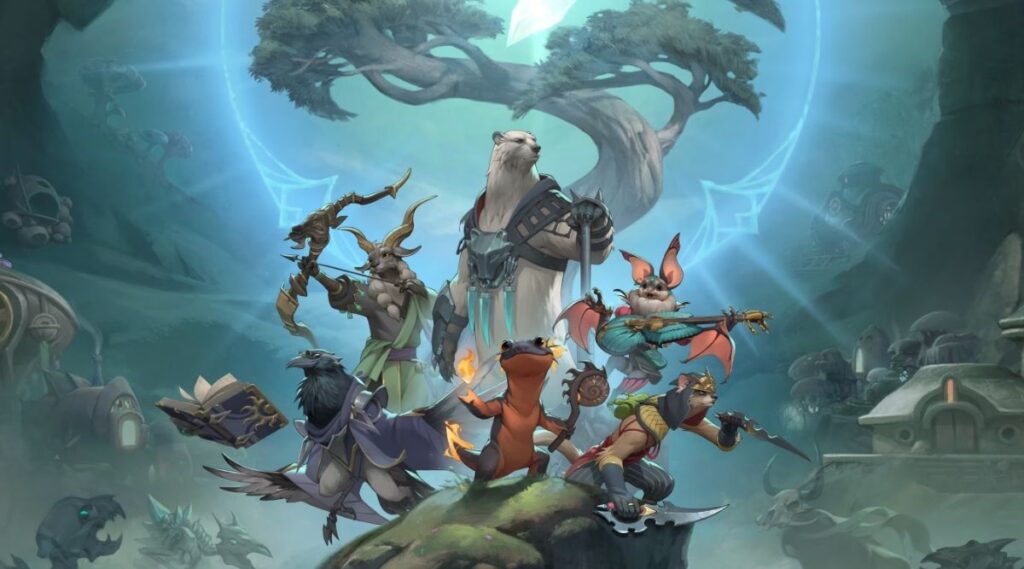Sunderfolk tries to pull off something unbelievably difficult: to the satisfying death of a turn-based tactics game with the accessibility and ease of use of a Jackbox Party Pack. Sunderfolk‘s developers attempted this by allowing players to control the game on their television via their phones. I was nervous about the concept at first. But the developers at Dreamhaven managed to make the controls seamless and highly polished, which is not too surprising, as former Blizzard CEO Michael Morhaime founded the studio. It works elegantly in practice and sets the stage for the game’s other strengths to shine through.
Playing through Sunderfolk tasks one to four players with progressing through a story-driven campaign. At the start of the campaign, each player chooses one of six heroes. Each hero falls into a familiar archetype and comes with a unique playstyle, helpfully labeled with how difficult they are to play. There is a wonderful variety among the classes, with each requiring a unique playstyle.
For example, in my initial campaign, I played the Arcanist, a raven character focused on teleporting enemies and allies around the map. This allowed me to kill enemies by dropping them into holes, to avoid hazards, and to clump enemies up for devastating attacks by my teammate. My teammate, on the other hand, played the lizard pyromancer. Their class was all about covering the battlefield in fire that damaged enemies if they walked into it. But if they walked over the fire, they would absorb it, and it could then be spent to increase the damage of their attacks.
The combinations and strategies that emerged from our chosen classes were consistently enjoyable throughout the entire campaign. One particularly fun strategy was using my Arcanist’s Gravity Well ability to pull enemies toward me and group them up. Then, my teammate would use a ground-pound ability that could damage the entire group at once. If they were charged with plenty of fire, they could even kill the entire group in a satisfying, board-clearing synergy.
Sunderfolk pushes players to constantly adapt their strategies.

Sunderfolk also pushes players to adapt their strategies by tasking them with multiple objective types and unique level layouts throughout the game. Some simply require players to defeat all the enemies while avoiding hazards. Others require players to collect objects around the level amidst waves of enemies or to escort an NPC through the level while protecting them from damage. Still others are puzzles that require players to balance spending their actions interacting with objects and defeating enemies. However, what is most impressive about Sunderfolk‘s gameplay is how well it strikes a balance between depth and accessibility.
I love strategy and tactics games, while my teammate had far less experience in the genre. But we both found ourselves having an absolute blast with Sunderfolk‘s gameplay. It was deep enough to provide a lot of fun for more seasoned genre players, especially when playing a more complicated class, while still being approachable enough for those with less experience using a simpler class.
Much of this success boils down to how Sunderfolk handles player actions. On each round during a level, each player takes their turn in any order they decide. A player’s actions during their turn are entirely dependent on playing cards. Most classes can equip three cards at a time, with the player selecting any of the cards equipped on each turn.
Each card has multiple actions on it that the player progresses through in order. For example, a very basic card may allow the player to move some spaces, then hit an enemy for a certain amount of damage, and then move again. This is an especially basic example, with most opening up more possibilities with area-of-effect attacks, unique class abilities, teleportation, and plenty more. Using the cards in this way is an elegant system, as it limits the options presented to a player while placing strategic control over those options in their hands, allowing them to choose their selection of cards between missions.
Sunderfolk’s hub area, Arden, adds a fun meta layer to the game.

Between missions, players interact with the underground town at the center of Sunderfolk‘s narrative, Arden. Arden is the player’s hub for upgrading their characters, customizing their loadouts, spending time with villagers to get to know them better, and upgrading the town’s various buildings to unlock more options for themselves.
Spending time in Arden adds a fun meta layer to Sunderfolk that brings some interesting decisions to make between missions while also giving players some fun characters and small side stories to experience outside of playing levels. Much like the main narrative behind Sunderfolk‘s levels, the side stories found in Arden are mostly just fine. Overall, the game’s writing is good enough to be fun for a little while and effectively mix up the pace of a play session, but it is never strong enough to be particularly impactful or memorable.
Sunderfolk pulls off a balance of depth and accessibility that few games do. Its controls and player-friendly design are perfect for picking up and playing with a group whenever you all hang out, and its varied levels and fun strategic layers give players a reason to keep coming back. With its responsive and intuitive smartphone controls and fun co-op strategy, Sunderfolk offers something special, well worth adventuring through.
Sunderfolk releases April 23 for PC, PlayStation 5, Switch, and Xbox Series X|S.
Sunderfolk
-
Rating - 8/108/10
TL;DR
Sunderfolk pulls off a balance of depth and accessibility that few titles do. With its responsive and intuitive smartphone controls and fun co-op strategy, Sunderfolk offers something special, well worth adventuring through.








